The University sits on a hill. From my room I look out over the plain where the buildings in Fairbanks rise (barely) above the spruce forest. It is a beautiful place, with statues spread around campus and a Museum I hope to visit when I return.
I spent the day getting the bike checked out, renting a satellite phone (which I hope I will not have to use -- no cell phone service North of Fairbanks), and buying provisions
. Helpful locals wander by as I clean and adjust bits and pieces of equipment. They comment on what bike they drove, or wished they drove, or on how the region North of Coldfoot has a lot of bears, grizzlies actually, or on how mile 120 to 130 of the Dalton Highway is reportedly soft, whatever that means.
I decided to ramp up my knowledge of Pipeline lore, and drive out to the Alyeska visitor center to see the pipeline exhibit. There was no one there. The exhibit is the actual pipeline, 48 inches in diameter, stretching North and South through the forest. The crude oil is transported 800 miles from Prudhoe Bay to Valdez, the US's northernmost ice free port. The oil is warm as it is pumped South. Sometimes the pipeline is put below ground, when the earth is stable. A lot of the time the conduit is above ground, when the material below is partly ice which could melt and destabilize the pipe. Built between 1975 and 1977 at huge cost, it was a response (in part) to the energy crisis of the 1970's and helped the US guarantee its sources of crude.
Oil was discovered in the North Slope of Alaska in 1968, on government land. The oil companies decided a pipeline was the best way to extract it. However, controversy around unresolved Native land claims and environmental issues would prevent the pipeline from being built until 1975. This was the year of the Arab oil embargo and gas shortages in the US. The President finally signed the authorizing Act in the Fall. The enormous $ 8 billion construction project, $10 million per mile, was privately financed. It employed some 28,000 at its peak, and had more of an impact on Alaska than all the Gold Rushes combined.
So, if this is so important, I guess I will have to drive up and see what all the talk is about. I leave tomorrow.
A Day in Fairbanks
Friday, June 10, 2016
 Fairbanks, Alaska, United States
Fairbanks, Alaska, United States
Other Entries
-
1Last Minute Preparations
May 2516 days prior Arlington, United Statesphoto_camera1videocam 0comment 1
Arlington, United Statesphoto_camera1videocam 0comment 1 -
2All the way to Hillsdale MI
May 2615 days prior Hillsdale, United Statesphoto_camera5videocam 0comment 0
Hillsdale, United Statesphoto_camera5videocam 0comment 0 -
3North through Michigan
May 2714 days prior Mackinaw City, United Statesphoto_camera12videocam 0comment 0
Mackinaw City, United Statesphoto_camera12videocam 0comment 0 -
4Visiting Chaska
May 2813 days prior Presque Isle, United Statesphoto_camera9videocam 0comment 9
Presque Isle, United Statesphoto_camera9videocam 0comment 9 -
5Hail Great Forks SD!
May 3011 days prior Grand Forks, United Statesphoto_camera10videocam 0comment 3
Grand Forks, United Statesphoto_camera10videocam 0comment 3 -
6Respect the wind.
May 3110 days prior New Town, United Statesphoto_camera4videocam 0comment 1
New Town, United Statesphoto_camera4videocam 0comment 1 -
7The Montana Hi Line
Jun 019 days prior Shelby, United Statesphoto_camera8videocam 0comment 8
Shelby, United Statesphoto_camera8videocam 0comment 8 -
8The Other Montana
Jun 028 days prior Cranbrook, Canadaphoto_camera13videocam 0comment 8
Cranbrook, Canadaphoto_camera13videocam 0comment 8 -
9The Icefields Parkway
Jun 037 days prior Jasper, Canadaphoto_camera13videocam 0comment 4
Jasper, Canadaphoto_camera13videocam 0comment 4 -
10Down the Fraser to Prince George, BC
Jun 046 days prior Burns Lake, Canadaphoto_camera12videocam 0comment 0
Burns Lake, Canadaphoto_camera12videocam 0comment 0 -
11Into the Cassiar Highway
Jun 055 days prior Bell II, Canadaphoto_camera9videocam 0comment 5
Bell II, Canadaphoto_camera9videocam 0comment 5 -
12Gateway to the Yukon - Watson Lake
Jun 064 days prior Watson Lake, Canadaphoto_camera12videocam 0comment 3
Watson Lake, Canadaphoto_camera12videocam 0comment 3 -
13First Day on the ALCAN Highway
Jun 073 days prior Whitehorse, Canadaphoto_camera15videocam 0comment 13
Whitehorse, Canadaphoto_camera15videocam 0comment 13 -
14Kluane National Park
Jun 082 days prior Beaver Creek, Canadaphoto_camera25videocam 0comment 12
Beaver Creek, Canadaphoto_camera25videocam 0comment 12 -
15Ha! Ha! Ha! laughed the Wickersham Brothers !
Jun 091 day prior Fairbanks, United Statesphoto_camera9videocam 0comment 3
Fairbanks, United Statesphoto_camera9videocam 0comment 3 -
16A Day in Fairbanks
Jun 10 Fairbanks, United Statesphoto_camera12videocam 0comment 4
Fairbanks, United Statesphoto_camera12videocam 0comment 4 -
17On the Haul Road to Coldfoot
Jun 111 day later Coldfoot, United Statesphoto_camera20videocam 0comment 5
Coldfoot, United Statesphoto_camera20videocam 0comment 5 -
18Atigun Pass and Beyond
Jun 122 days later Deadhorse, United Statesphoto_camera19videocam 0comment 5
Deadhorse, United Statesphoto_camera19videocam 0comment 5 -
19"It doesn't get any better than this"
Jun 133 days later Coldfoot, United Statesphoto_camera23videocam 0comment 6
Coldfoot, United Statesphoto_camera23videocam 0comment 6 -
20Return to Fairbanks
Jun 155 days later Fairbanks, United Statesphoto_camera8videocam 0comment 3
Fairbanks, United Statesphoto_camera8videocam 0comment 3 -
21Return Home
Jun 2010 days later Fairbanks, United Statesphoto_camera0videocam 0comment 4
Fairbanks, United Statesphoto_camera0videocam 0comment 4 -
22Back in the saddle again.
Jul 3050 days later Tok, United Statesphoto_camera16videocam 0comment 8
Tok, United Statesphoto_camera16videocam 0comment 8 -
23Over the Top
Jul 3151 days later Dawson City, Canadaphoto_camera14videocam 0comment 10
Dawson City, Canadaphoto_camera14videocam 0comment 10 -
24North on the Dempster Highway
Aug 0152 days later Eagle Plains, Canadaphoto_camera15videocam 0comment 3
Eagle Plains, Canadaphoto_camera15videocam 0comment 3 -
25Tetlit Gwinjik
Aug 0253 days later Inuvik, Canadaphoto_camera20videocam 0comment 6
Inuvik, Canadaphoto_camera20videocam 0comment 6 -
26A day on the MacKenzie River
Aug 0455 days later Tuktoyaktuk, Canadaphoto_camera23videocam 0comment 10
Tuktoyaktuk, Canadaphoto_camera23videocam 0comment 10 -
27Down the Dempster to Dawson
Aug 0657 days later Dawson City, Canadaphoto_camera7videocam 0comment 7
Dawson City, Canadaphoto_camera7videocam 0comment 7 -
28Down the Goldrush Trail
Aug 0758 days later Whitehorse, Canadaphoto_camera15videocam 0comment 8
Whitehorse, Canadaphoto_camera15videocam 0comment 8 -
29The Alaska Highway Again
Aug 0960 days later Fort Nelson, Canadaphoto_camera15videocam 0comment 13
Fort Nelson, Canadaphoto_camera15videocam 0comment 13 -
30Its Summer Again
Aug 1061 days later Chetwynd, Canadaphoto_camera13videocam 0comment 10
Chetwynd, Canadaphoto_camera13videocam 0comment 10 -
31R and R in Vancouver
Aug 1263 days later Vancouver, Canadaphoto_camera3videocam 0comment 2
Vancouver, Canadaphoto_camera3videocam 0comment 2 -
32Through the Cascades to Okanogan
Aug 1364 days later Okanogan, United Statesphoto_camera11videocam 0comment 8
Okanogan, United Statesphoto_camera11videocam 0comment 8 -
33Dam
Aug 1465 days later Thompson Falls, United Statesphoto_camera16videocam 0comment 4
Thompson Falls, United Statesphoto_camera16videocam 0comment 4 -
34East through Montana
Aug 1566 days later Harlowton, United Statesphoto_camera12videocam 0comment 9
Harlowton, United Statesphoto_camera12videocam 0comment 9
Comments
2025-05-23
Comment code: Ask author if the code is blank

 Fairbanks, Alaska, United States
Fairbanks, Alaska, United States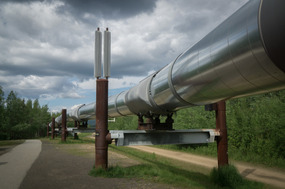


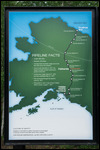
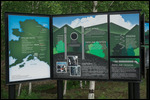
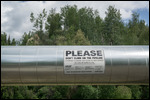
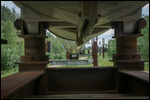
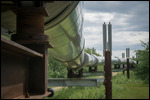
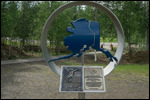
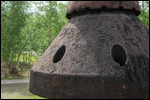

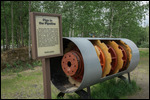
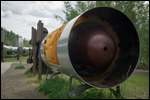
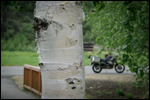
Beth
2016-06-11
Black Gold, Texas Tea.
Beth
2016-06-11
Black Gold, Texas Tea.
Reading here in the paper about the Dominion Power natural gas pipeline and the rural Virginia opposition to it...